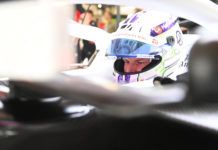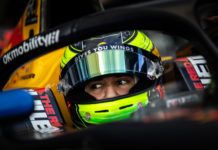Max Verstappen has had grid penalty for the yellow flag infringement in F1 Qatar GP qualifying, with similar offence for Valtteri Bottas but Carlos Sainz escapes.
The F1 Qatar GP qualifying ended under unusual circumstances after AlphaTauri’s Pierre Gasly had a puncture when a kerb ride damaged his front wing. There was some communication error where the yellow flag situation was not clear.
While the commentators thought there were no yellow flags but the onboards from cars showed marshals wave and also light box flashing yellow. The dashboard of most did not carry the yellow flag message and some saw double while others had single.
The summon for Red Bull’s Verstappen, Mercedes’ Bottas and Ferrari’s Sainz did not happen until late with the meet pushed to Sunday afternoon. The Dutchman was called in for double-waved while the latter two were in for single-waved offence.
The FIA went through the footage, telemetry and spoke with the drivers and concluded that all three will have to be handed a grid penalty. While Bottas was given a three-place grid drop for single-waved flag, Verstappen got five for double-waved.
For Verstappen: “The Stewards heard from the driver of Car 33 (Max Verstappen), the team representative and have reviewed video, marshalling system and telemetry evidence. Double yellow flags were displayed at Flag point 16.6 after the exit from Turn 16 (however the lights system was not enabled). The Stewards note the representations of the driver and team representative for mitigation of penalty in view of the lack of display of the yellow light panels, no dash warning lights and no audio signal to the driver. Whilst having sympathy for this request, the Stewards have taken into account the following:
1. Article 27.1 of the Formula One Sporting Regulations states that the driver must drive the car alone and unaided.
2. Appendix H of the Code states that flags and lights have the same meaning (and hence a flag signal must be complied with).
3. Article 27.2 requires the driver to observe the International Sporting Code at all times. That code, in Appendix H places the onus of responsibility of complying with flag signals clearly on the driver, so notwithstanding the fact the team argued that the turning off of the yellow sector on the FIA marshalling system some 34 second prior to the driver reaching the yellow flag, signified that it was “play on”, it was the driver’s responsibility to take the appropriate action when entering what was a double yellow flag area.
4. The Stewards examined the audio communications between the team and the driver and at no time did the team indicate to the driver the situation referred to in 3 above.
5. The driver acknowledged his awareness of the presence of Car 10 on the right side of the track. Having seen a disabled car, it is reasonable to expect, as was the case of the driver of Car 55, that there was a potential danger and that a yellow flag situation probably existed and therefore to take the appropriate action (i.e. to reduce speed).
6. The penalty for the driver of Car 44 in Austria 2020 resulted in a grid penalty of 3 positions which is the usual penalty for breaching a single flag situation, and the penalty for the driver of Car 5 in Bahrain 2021 which resulted in a grid penalty of 5 positions which is the usual penalty for breaching a double flag situation.
Accordingly, the Stewards believe they have no option but to impose the standard penalty for a breach of the double yellow flag requirements referred to above.
For Bottas: “The Stewards heard from the driver of Car 77 (Valtteri Bottas), the team representative and have reviewed video, telemetry and the marshalling system evidence. The driver admitted he did not notice the yellow flag displayed at Flag Point 16.6 and conceded that he did not reduce speed as required in the yellow flag area despite noting that Car 10 was stationary on the pit straight.”
For Sainz: “The Stewards heard from the driver of Car 55 (Carlos Sainz), the team representative and have reviewed video, marshalling system and telemetry evidence. The driver stated that although he did not see the yellow flag, he did see that Car 10 was stationary on the right of the pit straight and therefore assumed that there was the probability that he was in a yellow flag area, so made a significant reduction in speed in the relevant mini-sector. The Stewards confirmed this from the telemetry. He thus complied with the Race Directors Event Notes and Appendix H of the International Sporting Code.”
The new grid in the Top 10 will be: Hamilton, Gasly, Alonso, Norris, Bottas, Sainz, Verstappen, Tsunoda, Ocon, Vettel.
Here’s what was said after F1 Qatar GP qualifying



















